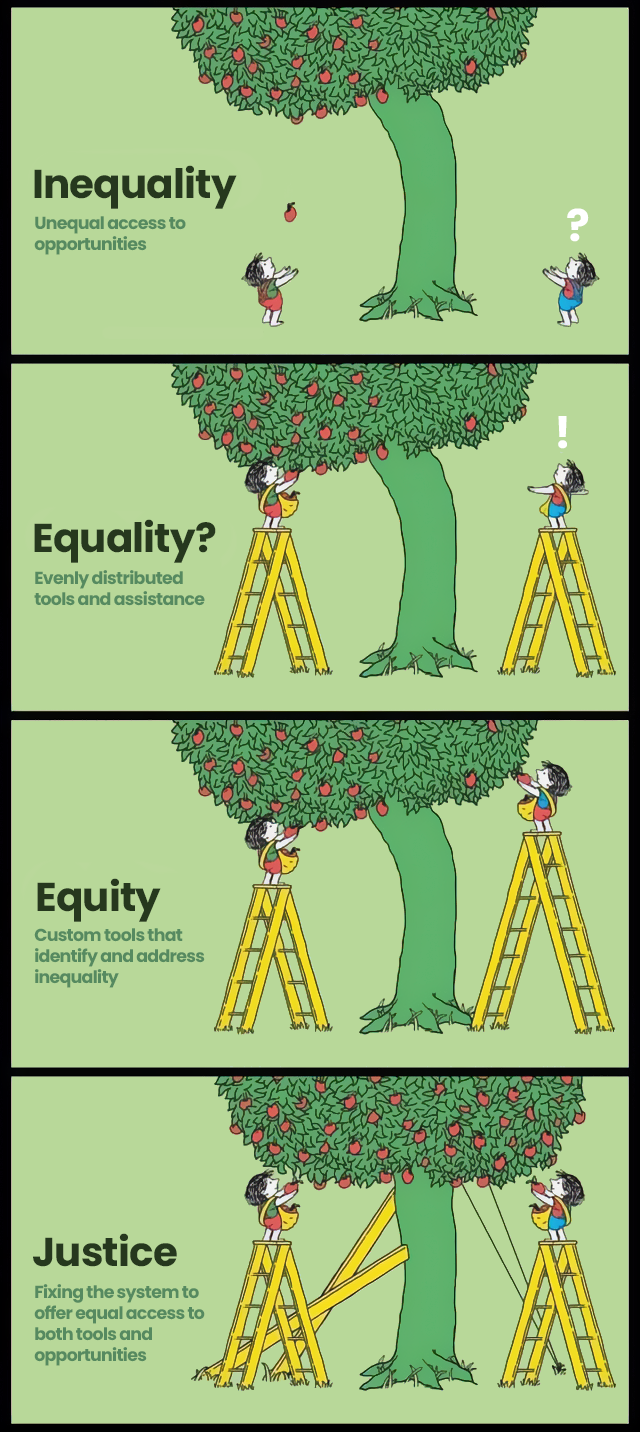Terms Used by J R McKenzie Trust
Equity and social justice
Equity describes when people have the same chance of a high quality of life. This is achieved by making sure that those who experience unfair conditions have access to better tools or supports to overcome them. This helps to bridge the gap with other people who don’t experience the same unfair conditions.
Social justice is similar to equity. In this case, equity is achieved changing the systems that create these unfair conditions so that they don’t exist anymore. This means that everyone could have equal access to the same tools and supports and still experience the same quality of life, because there are no other barriers in the way.
To describe what equity and social justice mean to JR McKenzie Trust, it is helpful to first describes what inequality means.
Inequality describes differences or imbalances in aspects of a people’s quality of life or access to opportunities. This means that some people experience a better quality of life than others.
Equality is sometimes described as the solution to inequality. Equality is when people have access to the same supports or tools as others. However, there may be other factors that mean everyone still doesn’t have the same quality of life or opportunities.
Inequity accounts for these other factors. It recognises that people don’t always have the same chance for a high quality of life even though they might have access to the same tools or supports. This is because of other unfair conditions* in society, like racism or bias, that put some people at a disadvantage (*see above for definition of conditions).
Equity describes when people have the same chance of a high quality of life. This is achieved by making sure that those who experience unfair conditions have access to better tools or supports to overcome them. This helps to bridge the gap with other people who don’t experience the same unfair conditions.
Social justice is similar to equity. In this case, equity is achieved changing the systems that create these unfair conditions so that they don’t exist anymore. This means that everyone could have equal access to the same tools and supports and still experience the same quality of life, because there are no other barriers in the way. This is JR McKenzie’s ultimate goal, because it protects the quality of life of future generations.
Exclusion
Exclusion is when people make decisions that affect you and your community, and you don’t get to have a say.
Systemic exclusion is when a community or group of people never get included in decision-making. When a community or group of people never get to have say about decisions that affect them, they can be more and more shut out.
Exclusion describes the act of people or communities regularly being left out of activities or decision-making. People who are excluded aren’t able to participate in or access things that most other people can.
Systemic exclusion refers to disproportionate exclusion experienced by groups of people due to factors beyond their control. This may include factors like discrimination or intergenerational poverty. Systemic exclusion is self-reinforcing – this means that the more people are excluded, the less they and subsequent generations are able to participate in or access things that others can.

